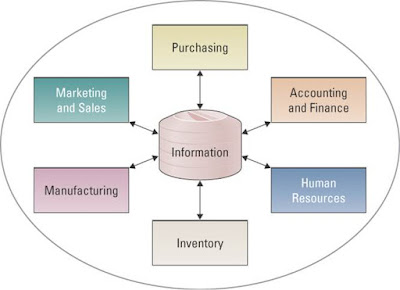MGT300-CHAPTER 2 : IDENTIFYING COMPETITIVE ADVANTAGES
LEARNING OUTCOMES :
- Explain why competitive advantages are typically temporary
- List and describe each of the five forces in Porter's Five Model
- Compare Porter's three generic strategies
- Describe the relationship between business processes and value chain
Identifying Competitive Advantages
-Competitive advantages is a product or services that an organization's customers lace a greater value on the similar from competitor. Furthermore, competitive advantages are temporary because they have keep duplicate the strategy.
3 Common Tools used in industry
- Porter's Five Forces Model
- Porter's Three Generic Strategies
- Value Chain
Porter's Five Forces Model
- Buyer Power
- High when buyers have many choices
- Low when their choices are few
- Loyalty program is the rewards customers based on the amount of business they do with a particular organization. Example is rewards on free online tickets.
- Switching costs is can make customers reluctant to switch to another product or service.
2. Supplier Power
- High when buyers have few choices of whom to buy
- Low when their choices are many which mean have many supplier
-Best practices of IT to create competitive advantages
-Example, B2B marketplace is a private exchange allow a single buyer to posts it needs and then open the bidding to any supplier who would care the bid. Reverse auction is an auction format in which increasingly lower bids.
-Supplier power is the converse of the buyer power
3. Threat of Substitute Product or Service
- High when there are many alternatives to a product or service.
- Low when there are few alternatives fro, which to choose.
- Switching costs- costs that can make customers reluctant to switch to another product or service.
4. Threat of New Entrants
- High when it is easy foe new competitors to enter a market.
- Low when there are significant entry barriers to entering a market
- Example; Astro & Air Asia
Entry Barrier :
- a product or service feature that customers have come to expect from organization in a particular industry.
- must be offered by an entering organization to compete and survive
5. Rivalry among existing competitors.
- High when competition is fierce in a market
- Low when competition is more complacent
- Need to know how how to create the best selling in industry
- Example: Maxis & Digi
Porter's Three Generic Strategies
(i) Cost leaderships
- Becoming a low cost producer in the industry allows the company to lower prices to customer.
- Competitors with higher costs cannot afford to compete with the low costs leader on price
(ii) Differentiation
- Create competitive advantages by distinguishing their products on one or more features important to their customer.
- Unique features or benefits may justify price differences and stimulate demand.
(iii) Focused strategy
- Target to a niche market
- Concentrates on either cost leadership or differentiation.
Value Creation
-Value chains is the targeting business processes
-Supply chain is a chain or services of processes that adds value to product and service for customer.
- Add value to its products and services that support a profits margin for the firm
THANK YOU ;)





Comments
Post a Comment